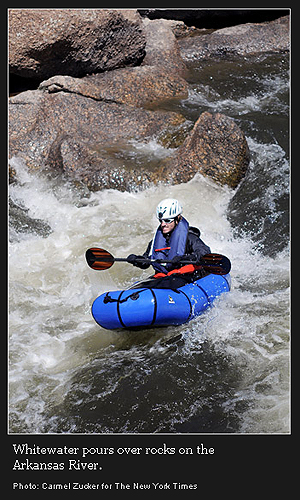My story in today’s New York Times — “River Craft Lite: Floats Great, Less Filling” — covers pack rafting, an activity with roots in aviator survival boats from World War II. For decades, adventurers have employed the lightweight and durable vessels to cross lakes, descend remote rivers or portage for miles to reach wilderness in far corners of the globe.
In recent years, the small rafts have seen a resurgence with outdoors fanatics. They are equally capable of handling rapids, ocean bays and long lake crossings. They can weigh as little as three pounds and are easily stowed in a backpack for transport on dry land.

“Pack rafts are the Swiss Army knife of boats: small, versatile, packable and a jack of all trades,” said Andrew Mattox, an owner of Alpacka Raft, based in Mancos, Colo., which sells a range of models starting around $600.
For the Times story, I joined a group of pack-rafters on a two-day trip in the San Isabel National Forest. At a boat launch on the Arkansas River near the town of Sailda, Colo., we sorted gear to prepare for the journey, which would cover about 25 miles of travel equally divided between land and water.

Before heading out, I stuffed food, a sleeping bag, a shell jacket and survival gear in a backpack — all cinched in waterproof sacks. With a kayak paddle strapped to the outside of the pack, I followed Jason Magness, the trip leader and a founder of the YogaSlackers group, and two companions, and the hike began.
Our adventure included backpacking, mountain climbing, canyoneering, camping out and then — after inflating the rafts on the second day — a long paddle back to the cars through whitewater on the Arkansas up to class IV.

Click to read the full story, “River Craft Lite: Floats Great, Less Filling”.






